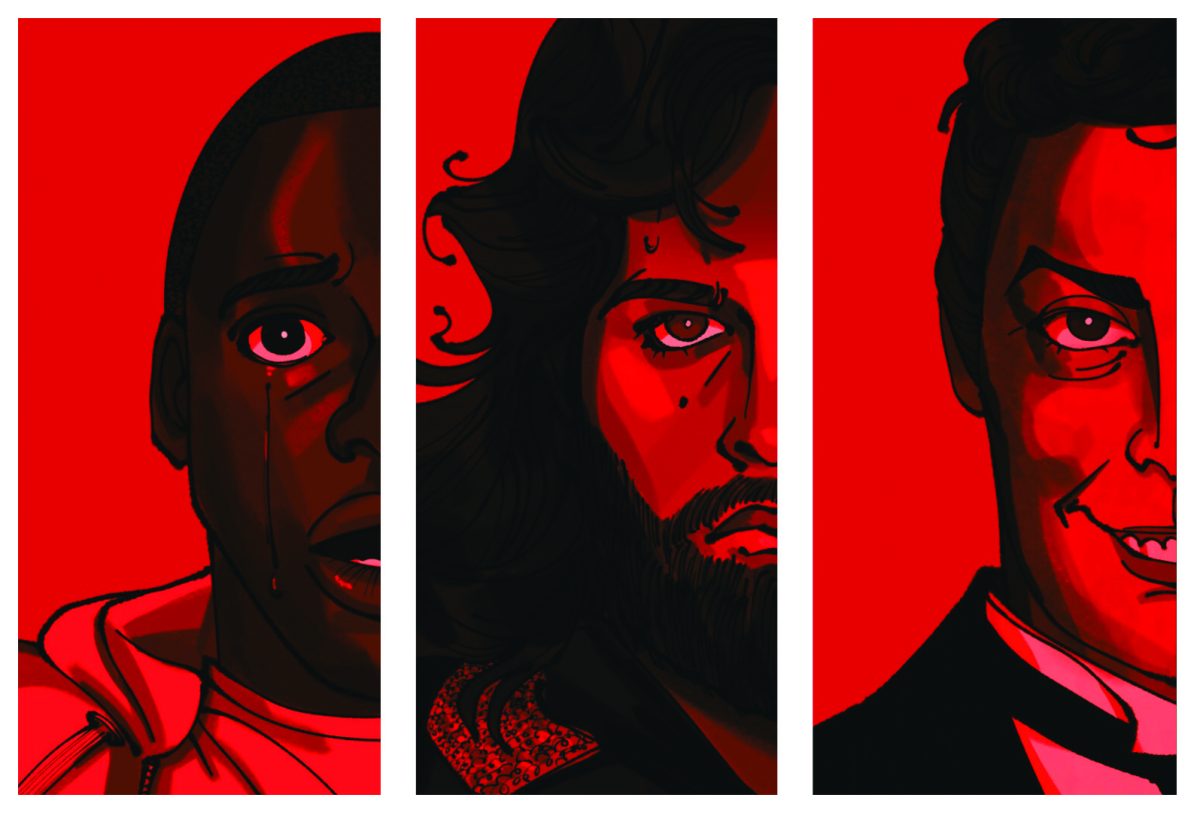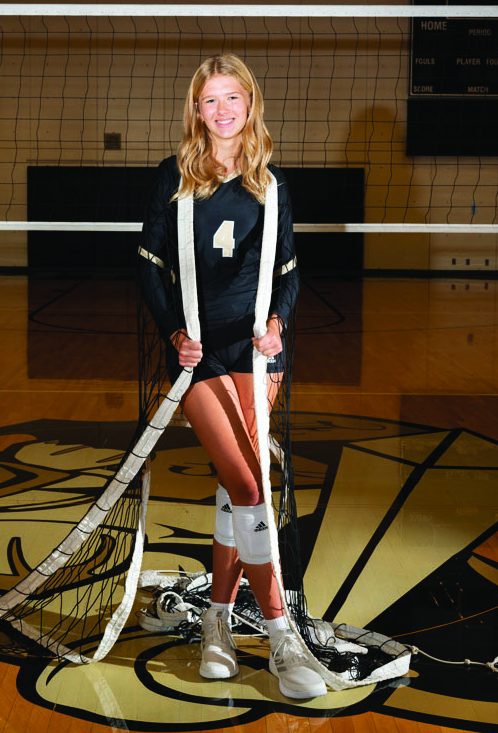Reputation’s price tag: In a sea of similar logos, is it okay to stick out?

March 4, 2020
Hydroflask? Check. Brandy Melville? Yup. Fjallraven Kånken backpack? Got it. All of these fit the basic Vsco girl starter pack. Nike and Adidas? Probably an athlete. In a sea of logos, it’s common for many students to incorporate current trends into how they dress. Our attraction to brand name labels has ultimately put a label on who we are as a person, and that has caused us to fall into certain categories that blur other people’s perception of who we really are.
Throughout the hallways of Lincoln Southeast High School, there are different people flaunting the same styles, matching shoes and water bottles, and noticeable brand name labels stick out from person to person. As high schoolers, our reputation has started to matter more to us. Chasing the latest trends and wearing brand-name clothing, we are pouring our money and possibly our individuality down the drain.
Unbeknownst to us, we might be changing along with the trends. This brings up the question of whether we buy items because it’s our style, or if we buy it because other people have it too. Most of the time, brand-name items are worn to increase someone’s reputation or to fit in with the crowd, and many friend groups have the same type of clothing style. As it may seem, this generation may be more fashion-conscious. It’s because our clothes are now defining who we are, but whether or not that’s a good or bad thing depends on the person.
Sophomore Josie Dobson explains why some people may choose to follow trends, and how it can affect them.
“I think that in most instances, if our outfits that we wear to school every day follow trends, then it makes sense of comfort in what you are wearing,” Dobson said. “I know for some people it provides a sense of comfort and confidence to their everyday lives. I don’t think it is a bad thing, because trends are what shape the pop culture of today. Depending on the trend it could either be a good thing or a bad thing. Just as long as it doesn’t affect your personality and personal opinions in a negative aspect.”
In a 2011 study conducted by researchers Rob M.A. Nelissen and Marijn H.C. Meijers from Psychology Today, it was found that luxury items signal wealth and status, and most of the time can prompt favorable treatment in social interactions. They conducted a series of experiments to see the role luxury items play in someone’s social status, and one experiment on status perception involved having participants wear either a Lacoste or Tommy Hilfiger shirt, while another group wore a non-brand-labeled shirt. The participants wearing the brand-name shirts were perceived as wealthier and of higher status.
Another experiment they did was to test compliance, and in this they had a confederate approach shoppers with a clipboard, requesting the shoppers to answer a few questions. In the first test, they had the confederate wear a green sweater with a Tommy Hilfiger logo, and in the second test, they had the same confederate wear an identical sweater but without the logo. They found that shoppers complied with the confederate’s request 52.2 percent of the time when the confederate was wearing the brand-labeled sweater. However, they only compiled 13.6 percent of the time when the confederate wore the sweater without the label. These experiments showed that reputation increases when someone is wearing brand-name items, and this common perception is what’s prompting more people to wear them.
Brand-name items have started to head to the top of people’s shopping lists, with luxury items playing an increasingly important role in the fashion industry itself. According to Business Insider, in 2018, athletic brands dominate the apparel and footwear rankings, with Nike coming in first place for the most-bought brand by teens. However, these labels come at a price. According to Brad Tuttle, a contributor to the Business section of Time Magazine, in 2012, it’s common for store brands to cost 25 percent to 30 percent less than their name-brand equivalents at full retail prices. However, students are still willing to spend hundreds of dollars on clothes and other brand-name items, and it’s not all because of the quality; for most, it’s about keeping up with the latest trends. In fact, Tuttle furthered in his article that in 2010, 57 percent of consumers agreed with the statement “Brand names are not better quality.” More recently, the figure inched up to 64 percent. However, even though students know this, they are still purchasing expensive items at a high amount.
“I would say [students shouldn’t spend that much], but this is very hypocritical of me because I am so guilty for spending too much for simple things,” senior Samantha Taylor said. “They should know, especially when they get to the age when they get to be more independent and where they’re going to start knowing the importance of money, and think that maybe those $50 shouldn’t go towards that shirt and maybe actually buy some groceries and get a regular shirt from Target that’s worth the exact same, quality wise. So I would say pick and choose what you should spend something on.”
Many students will risk their money to purchase brand-name items, but what happens to their individuality? Our tendency to follow the crowd can be shown through clothing as well, and trends can spread fast throughout a large body of people, especially with the amount of students at Southeast. These trends can sprout by taking an interest in something that another person owns, but most of the time they start with social media.
Taylor explains the perception that teenagers may have that starts trends.
“I would say primarily through Instagram, and now, TikTok, but definitely Instagram,” Taylor said. “If you follow a certain celebrity or social media influencer and they’re wearing something that you think it’s cute and they’re wearing it, then you also want to wear it to be cool like them. It’s silly, but I think that all goes through our heads in some way or form, so I think that’s definitely how it’s spread.”
Many teens buy brand names because of the positive connotations that come with it. However, what does this say about them as a person? Can conforming to the crowd possibly lead to a change in character? Individuality is one of the biggest concerns in following trends, and it can be lost when someone decides to copy others’ looks.
“If you’re following a trend, you’re not really expressing yourself, and it’s kind of like, “Oh, this is what’s accepted and this is what won’t make me weird to anyone,’” Taylor said. “I would say that’s kind of a negative thing because you’re falling into trends so then you don’t stick out from anyone. Why not be true to yourself and actually get it because you want it and think it’s cute… Maybe the person’s insecure possibly, that they don’t want to step out of their shell that much. Or also, it’s that they almost don’t have a mind of their own, and this is definitely hypocritical because I follow trends all the time, but you still kind of think that.”
However, in some students, their perception is that individuality can still be retained. Regardless of what trends someone may follow or what clothes they wear, their personality shouldn’t change as much. Some students may follow trends to fit in, but there are many like junior Mya Lawson that buy something because of personal interests, not because of outside influences.
“I think trends can have a strong influence on consumer purchase decisions depending on the person,” Lawson said. “Some people like having things because other people have them, but personally if something is trending like [Nike] Air Force 1s, I want them, but not because other people have them, but because I’ve seen them around frequently and like them a lot. I think it depends on the person and perspectives and how easily somebody is a follower versus a leader.”
Today, many students adhere to certain fashion standards for many different reasons, but it has become clear that trends are influencing our perceptions of other people as well as our perceptions of ourselves. Regardless of the trends being followed, students can still bring their personality and flair into their style. The way we dress is the way we want the world to see us. Even in the age of increasing technology use and social media, no one says that we can’t start trends ourselves.









